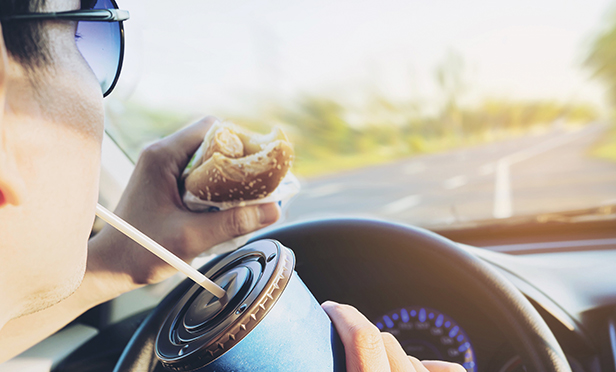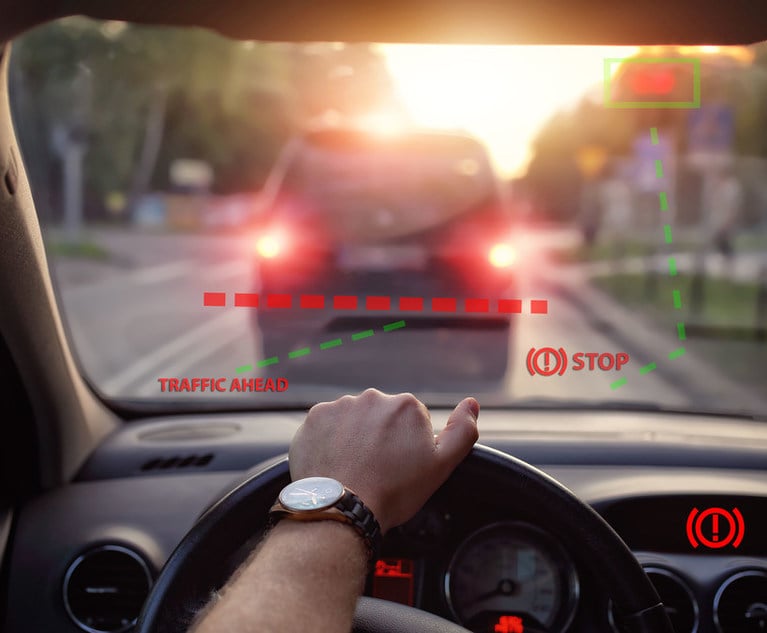 Distracted driving involves actions such as talking topassengers or on the phone, listening to music, daydreaming, eatingor drinking. (Photo: Shutterstock)
Distracted driving involves actions such as talking topassengers or on the phone, listening to music, daydreaming, eatingor drinking. (Photo: Shutterstock)
With more than six million auto accidents occurring annually,many claims managers already feel as if they have been run over bythe number of resulting claims. As automobiles increasingly doubleas entertainment centers, telephone booths, restaurants andpersonal grooming boutiques, the demands placed upon claimsmanagers have only increased.
|Unless significant behavioral change occurs among motorists,auto claims will continue to shuttle into claims departments at apace best described as intense.
|What is distracted driving?
When discussing distracted driving, talking on the telephone andtexting quickly come to mind. However, anything that takes thedriver's eyes or even mind off the road counts as distracteddriving. This includes using a navigation system, listening tomusic, drinking a cup of coffee and even daydreaming.
|Related: Putting a price on the risk of distracteddriving
|There has been an alarming rise in roadsidefatalities
According to an estimate released by the National SafetyCouncil, a nonprofit safety advocacy group, roadsidefatalities in 2016 reached 40,200. Not only was this a 6% gain from2015, it was a 14% increase from 2014. These increases haveaffected business automobile liability insurance rates.
|The National Safety Council also released these findingsregarding distracted driver behavior:
- 47% of motorists described themselves as being comfortabletexting while driving, and
- 10% of drivers reported driving while drunk.
According to the Centers for Disease Control and Prevention,more than 1,000 people are injured in crashes reported to involvedistracted driving each day in the United States.
|Analysts working for the National Highway Traffic SafetyAdministration report the increase in vehicular fatalities can bepartially attributed to the fact more people are driving more milesdue to increased job growth and lower fuel prices. Combined withmore miles and time spent the road, analysts cite three main causesfor the troublingly high number of traffic fatalities:
- Distracted driving was a factor in approximately 10% of autodeaths.
- Almost 50% of the deaths occurred when passengers were notwearing seat belts. This is astonishing, considering it has beenmore than 30 years since New York state became the first state topass a law requiring vehicle occupants to wear seat belts.
- Approximately 30% of fatalities involved a drunken driverand/or an excessive rate of speed.
Related: Daydreaming tops fatal distracted drivingbehaviors, Erie Insurance finds
|Putting a price tag on auto crashes
The National Safety Council estimated auto crashes cost about$432.5 billion in 2016, including those stemming from motor vehicledeaths, injuries and property damage. To put this staggering pricetag into perspective, it equals almost one-half of 2016U.S. social security benefit payments.
|Related: Can auto technology win the war against distracteddriving?
|Impact of vehicular accidents on business automobileliability insurance
Business automobile liability insurance rates arerising faster than they have in more than a decade. Even so, costsassociated with crashes are outpacing premium increases for someinsurance companies.
|Although insurance companies are charging more for autoliability, they are making less money. When questioned as to whatis causing the spike in auto wrecks, insurers report the use ofsmartphones by motorists to talk, text and access the internet as anew and significant factor.
|In addition to an increase in the number of wrecks, the risingsize of business automobile liability insurance claims is affectingseveral auto insurance companies' bottom lines. Growing costs formedical care and auto repair are significant contributors to theincreasing severity of claims. The rising price of auto parts hasalso been a contributing factor.
|Related: 14 key findings from the AAA Foundation 2017traffic safety study
|Smart cars are being outsmarted by inattentivedrivers
The growing number of accidents “is swamping the much-heraldedbeneficial impacts of newer, safer vehicles,” according to RobertHartwig, an insurance professor at the Darla Moore School ofBusiness at the University of South Carolina. Technical advancesinclude rear view cameras, collision-avoidance systems, air bagsand anti-lock brakes.
|If a company has a fleet of vehicles or if employees use theirown vehicles while on company business, share this information withthem before they get behind the wheel and assume avoidable risks.Companies might also consider joining with many otherforward-thinking businesses by imposing a complete ban on the useof personal devices – both hand-held and hands-free – for employeesdriving to and from work, or when on company business. Encouragethem to spend the time figuring out how they can arrive safely attheir destinations, so they can go on helping serve customers orcreating the company's next product or service breakthrough.
|As a result, safe driving will not only cut costs, it willincrease revenue.
|Gerry Sorge ([email protected]) is a claimsadvocate at KMRD Partners, Inc., a risk and human capitalmanagement consulting and insurance brokerage firm located in thePhiladelphia region serving clients worldwide.
Want to continue reading?
Become a Free PropertyCasualty360 Digital Reader
Your access to unlimited PropertyCasualty360 content isn’t changing.
Once you are an ALM digital member, you’ll receive:
- All PropertyCasualty360.com news coverage, best practices, and in-depth analysis.
- Educational webcasts, resources from industry leaders, and informative newsletters.
- Other award-winning websites including BenefitsPRO.com and ThinkAdvisor.com.
Already have an account? Sign In
© 2024 ALM Global, LLC, All Rights Reserved. Request academic re-use from www.copyright.com. All other uses, submit a request to [email protected]. For more information visit Asset & Logo Licensing.








